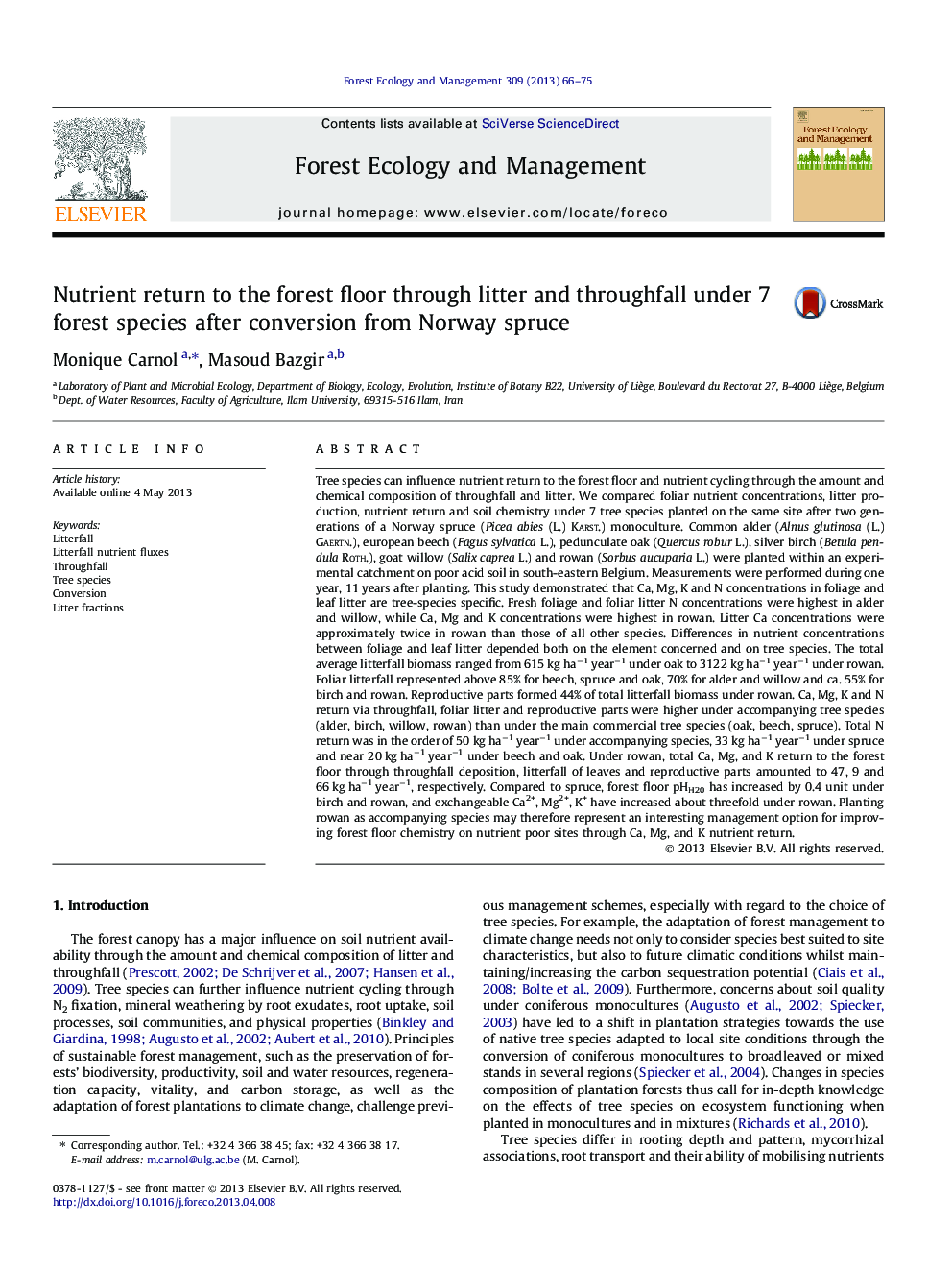| کد مقاله | کد نشریه | سال انتشار | مقاله انگلیسی | نسخه تمام متن |
|---|---|---|---|---|
| 86673 | 159205 | 2013 | 10 صفحه PDF | دانلود رایگان |

• At the same site, foliar and litter nutrient concentrations depended on tree species.
• Ca, Mg and K return to the forest floor was highest under rowan.
• Forest floor exchangeable Ca2+, Mg2+, K+ were significantly higher under rowan.
• Planting rowan may improve forest floor chemistry on nutrient poor sites.
Tree species can influence nutrient return to the forest floor and nutrient cycling through the amount and chemical composition of throughfall and litter. We compared foliar nutrient concentrations, litter production, nutrient return and soil chemistry under 7 tree species planted on the same site after two generations of a Norway spruce (Picea abies (L.) Karst.) monoculture. Common alder (Alnus glutinosa (L.) Gaertn.), european beech (Fagus sylvatica L.), pedunculate oak (Quercus robur L.), silver birch (Betula pendula Roth.), goat willow (Salix caprea L.) and rowan (Sorbus aucuparia L.) were planted within an experimental catchment on poor acid soil in south-eastern Belgium. Measurements were performed during one year, 11 years after planting. This study demonstrated that Ca, Mg, K and N concentrations in foliage and leaf litter are tree-species specific. Fresh foliage and foliar litter N concentrations were highest in alder and willow, while Ca, Mg and K concentrations were highest in rowan. Litter Ca concentrations were approximately twice in rowan than those of all other species. Differences in nutrient concentrations between foliage and leaf litter depended both on the element concerned and on tree species. The total average litterfall biomass ranged from 615 kg ha−1 year−1 under oak to 3122 kg ha−1 year−1 under rowan. Foliar litterfall represented above 85% for beech, spruce and oak, 70% for alder and willow and ca. 55% for birch and rowan. Reproductive parts formed 44% of total litterfall biomass under rowan. Ca, Mg, K and N return via throughfall, foliar litter and reproductive parts were higher under accompanying tree species (alder, birch, willow, rowan) than under the main commercial tree species (oak, beech, spruce). Total N return was in the order of 50 kg ha−1 year−1 under accompanying species, 33 kg ha−1 year−1 under spruce and near 20 kg ha−1 year−1 under beech and oak. Under rowan, total Ca, Mg, and K return to the forest floor through throughfall deposition, litterfall of leaves and reproductive parts amounted to 47, 9 and 66 kg ha−1 year−1, respectively. Compared to spruce, forest floor pHH20 has increased by 0.4 unit under birch and rowan, and exchangeable Ca2+, Mg2+, K+ have increased about threefold under rowan. Planting rowan as accompanying species may therefore represent an interesting management option for improving forest floor chemistry on nutrient poor sites through Ca, Mg, and K nutrient return.
Journal: Forest Ecology and Management - Volume 309, 1 December 2013, Pages 66–75